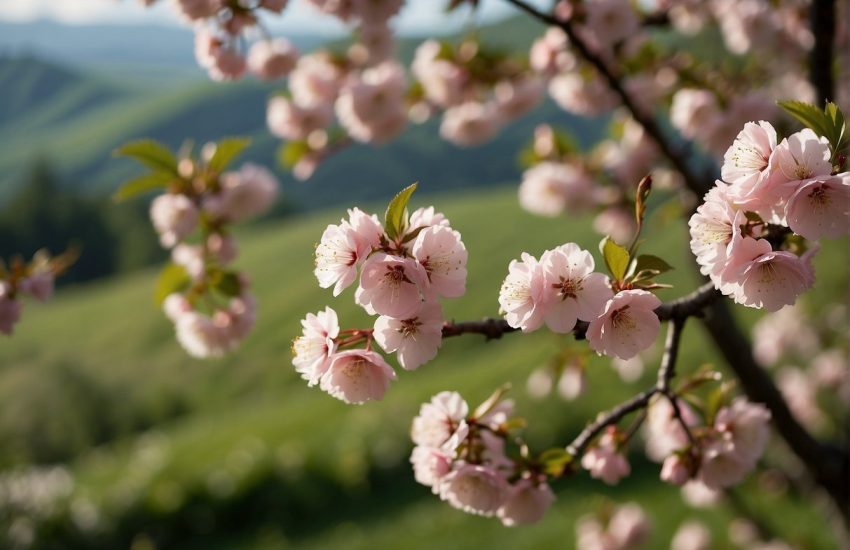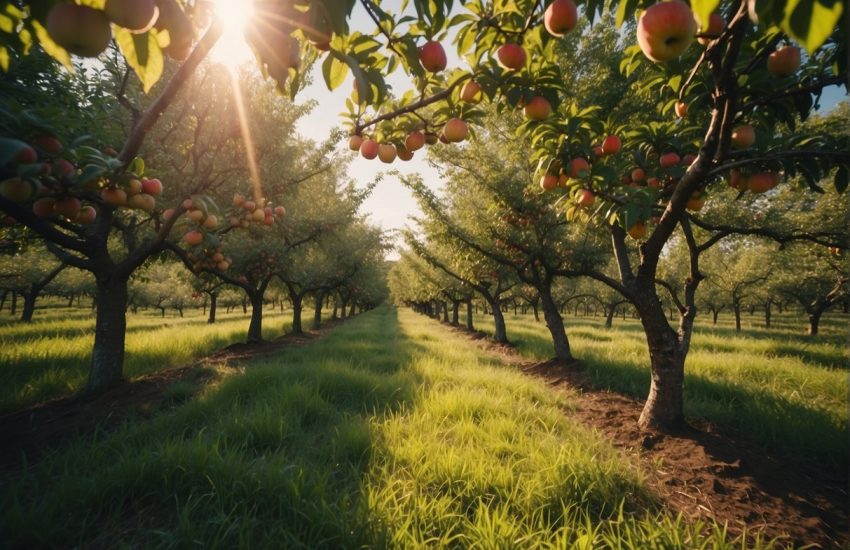7 Best Plum Trees To Grow In Georgia
North Georgia gardens within USDA hardiness zones 7 and 8 have no problem growing plums. Several varieties of Japanese plums seem to grow best, including Methley, a sweet variety that ripens early in the season, or Morris, a fruit that is hard and sweet.
The plums that win for fresh eating are Spring Satins, Byrongolds, or Ruby Sweets. Those gardeners who enjoy eating green plums should consider Bruce Six Weeks, Robutso or Segundo as good choices.
The flowering of white or pink blossoms, accompanied by foliage sporting narrow, green leaves, makes plum blossoms a favorite early in the spring.
Once the blooms have faded, the grapes will begin to appear in the form of green fruits that reach about 2-3 inches in width once they are mature. It is not always possible to predict when plums will be ripe, but most of them mature from late July to August.
Plum trees grow better when planted in well-drained soil in an area with plenty of sunlight. As a rule of thumb, plum trees tend to be sterile, meaning that they cannot produce fruit without a second tree with which to pollinate them.
For this reason, gardeners need to plant two trees, or choose a self-pollinating tree if space is tight. The first year after trees are planted, they require heavy pruning to conform to their shape.
Geopride Plumcot Tree
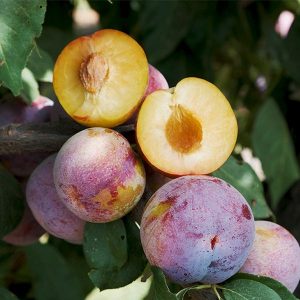
A flavorful combination of an apricot and a plum tree, the Geoprince Plumcot Tree (Prunus x ‘Geo Pride’) is the perfect example of what they say, good things come in small packages! The best of both worlds, Geopride is beautiful and productive at the same time!
The skin is golden yellow and reddish-purple mottled, and the flesh is golden yellow! With the flavor of plums and apricots and its crisp texture, this is a truly amazing product.
Summer brings glossy and lush foliage to this petite tree. It’s the perfect setting for what’s to come! The mid-season harvest of this smaller tree provides a good yield of medium-sized fruit.
Candy Heart Pluerry™ Interspecific Plum Tree
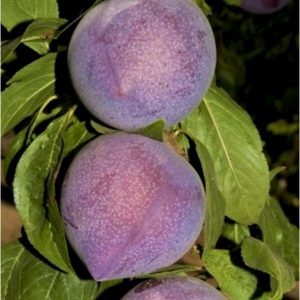
It is a great combination of Japanese Plums and sweet Cherry fruits, and it forms heart-shaped candy-sweet fruits! Think about biting into a Cherry followed by a Plum – the taste and texture are the same, so imagine a Pluerry!
The skin of this fruit is dark purple splotched with dark speckles. Despite its amber-red color, the flesh is sweet and slightly tart. You’ll understand why it is called a Candy Heart as soon as you cut one in half. A mouthwatering red flesh with golden highlights will take your breath away! It also forms an adorable heart shape when cut in half!
The Pluerries of this tree are tiny stone fruits that produce a huge amount of fruit!
Its size is slightly smaller than a golf ball, which makes it a perfect size for popping in your mouth, preserving into jams or jellies, or baking into pies.
Featuring a small pit that’s more like the pit of a Cherry rather than the pit of a Plum, these are a tasty treat for fruit lovers!
Superior Plum Trees
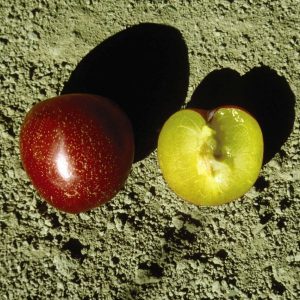
The hardy Superior Plum trees (Prunus hybrid ‘Superior’) range from American to Japanese plums naturally crossbred. Hardy to USDA hardiness zone 4, they are highly recommended for areas north of that.
Sub-freezing temperatures are no match for Superior Plum trees! A 8,000-foot altitude is also suitable for them.
Young trees begin producing when they are young. As spring turns to summer, you’ll be excited to see the harvest ripen.
Golden-yellow flesh covers the fire engine red exterior of the large fruit. Those classic Plums will delight you with their rich flavor.
We can assure you that nothing tastes better than a plum fresh from your tree. The apples are delicious straight from the tree, still warm from the sun and tree-ripe. In addition to jams, jellies, and desserts, they’ll also make their own jam.
Bruce Plum Tree
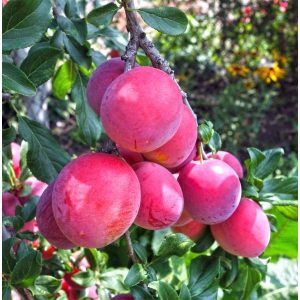
You should try the tasty Bruce Plum Tree (Prunus salicina x angustifolia ‘Bruce’) if you live in a low lying area where it is hot, dry, and frosty sometimes. A.L. Bruce of Donley, Texas introduced this American hybrid in 1921 and it has since become one of the toughest and easiest-to-grow plums available for home growers.
An Abundance plum (which Luther Burbank introduced in 1888) crossed with Chickasaw plums from North America, Bruce is a hybrid. It is a tree that combines the best qualities of both its parents.
Even when the heat is dry in the West and humid in the South, Bruce Plum is a champ. Low lying areas can be frosty from time to time without a problem.
Flavor Queen Pluot®
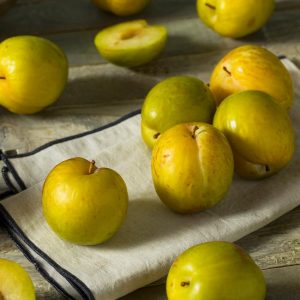
This Flavor Queen Pluot tree will provide you with fresh, yummy Pluot fruits. Pluots, with greenish-yellow skins and amber flesh, are known for their sweet flavor and prolific fruit production. Isn’t that the best part? The plum fruit combines the best of apricots and plums!
A semi-dwarf tree that blooms with beautiful flowers from March to April, this beauty features green foliage. Ripens in July and produces 50 lbs of fruit. It is full of delicious Pluots.
Enjoy the fruits of the late summer harvest by making jelly and jam or eating them fresh. As well as salads and baked goods, you can include them in your recipes.
Mount St. Helens® Plum Tree
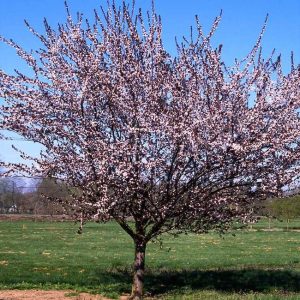
Mount St. Helen’s Plums are noted for their small, light pink flowers and purple foliage that lasts through the summer. In comparison to other trees of this species, it is hardier and more compact, which makes it ideal for growing in small spaces or in harsh weather conditions.
In mid-summer, Mount St. Helens produces juicy plums despite its aesthetic beauty. A popular focal point, Mount St. Helens is gorgeous in spring with fragrant flowers, purple leaves in the summer, and wine-colored foliage in the fall.

